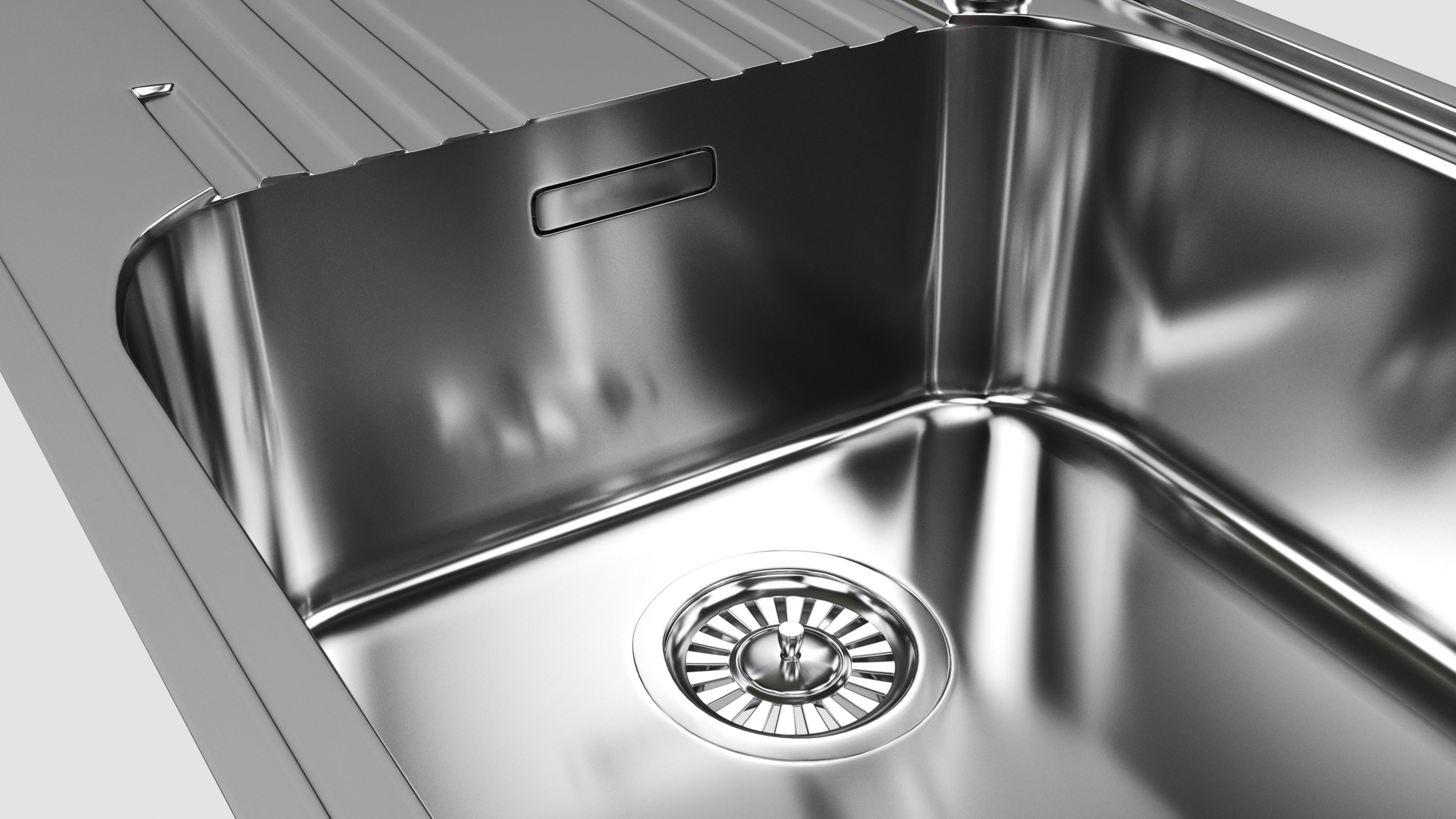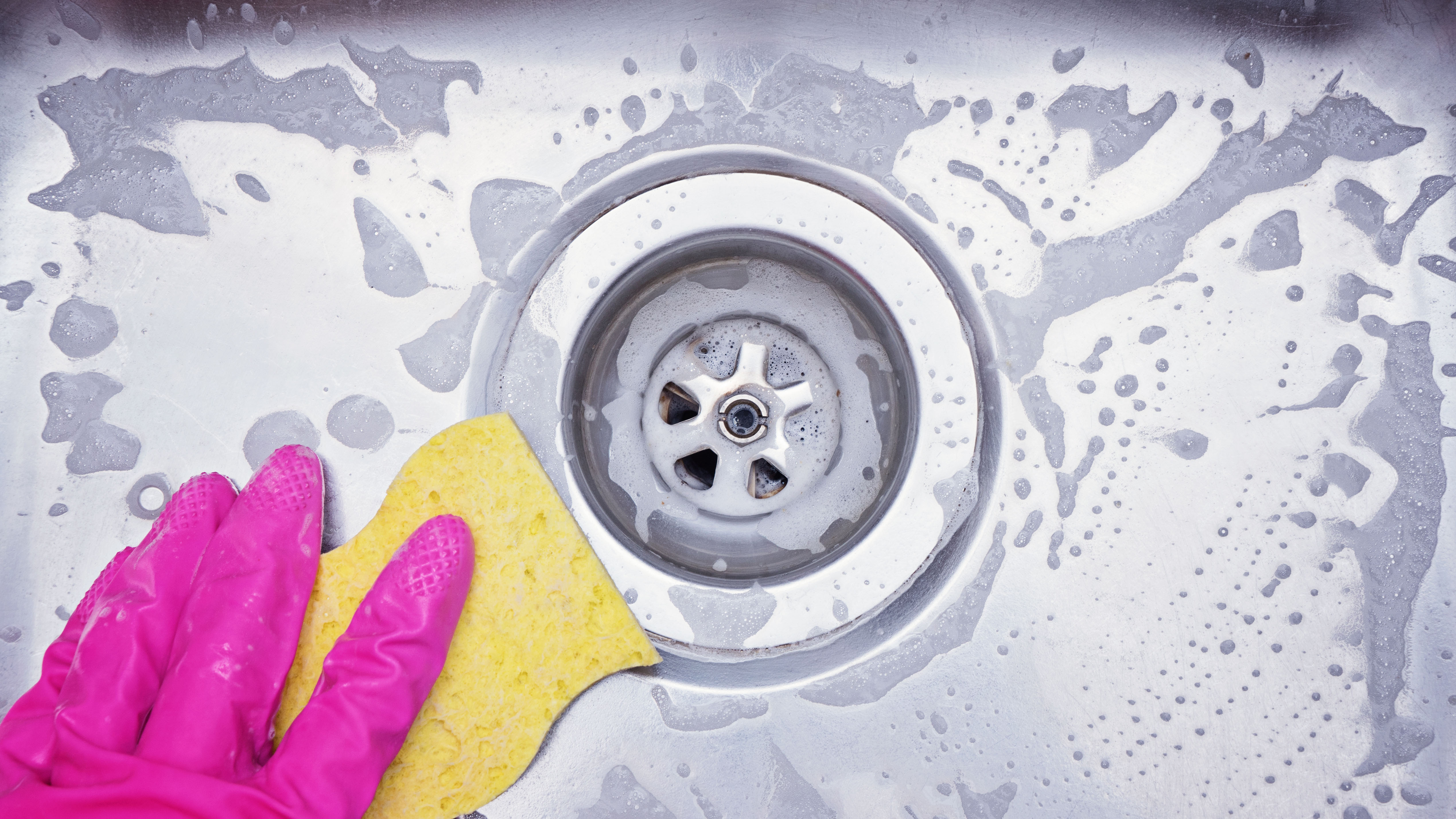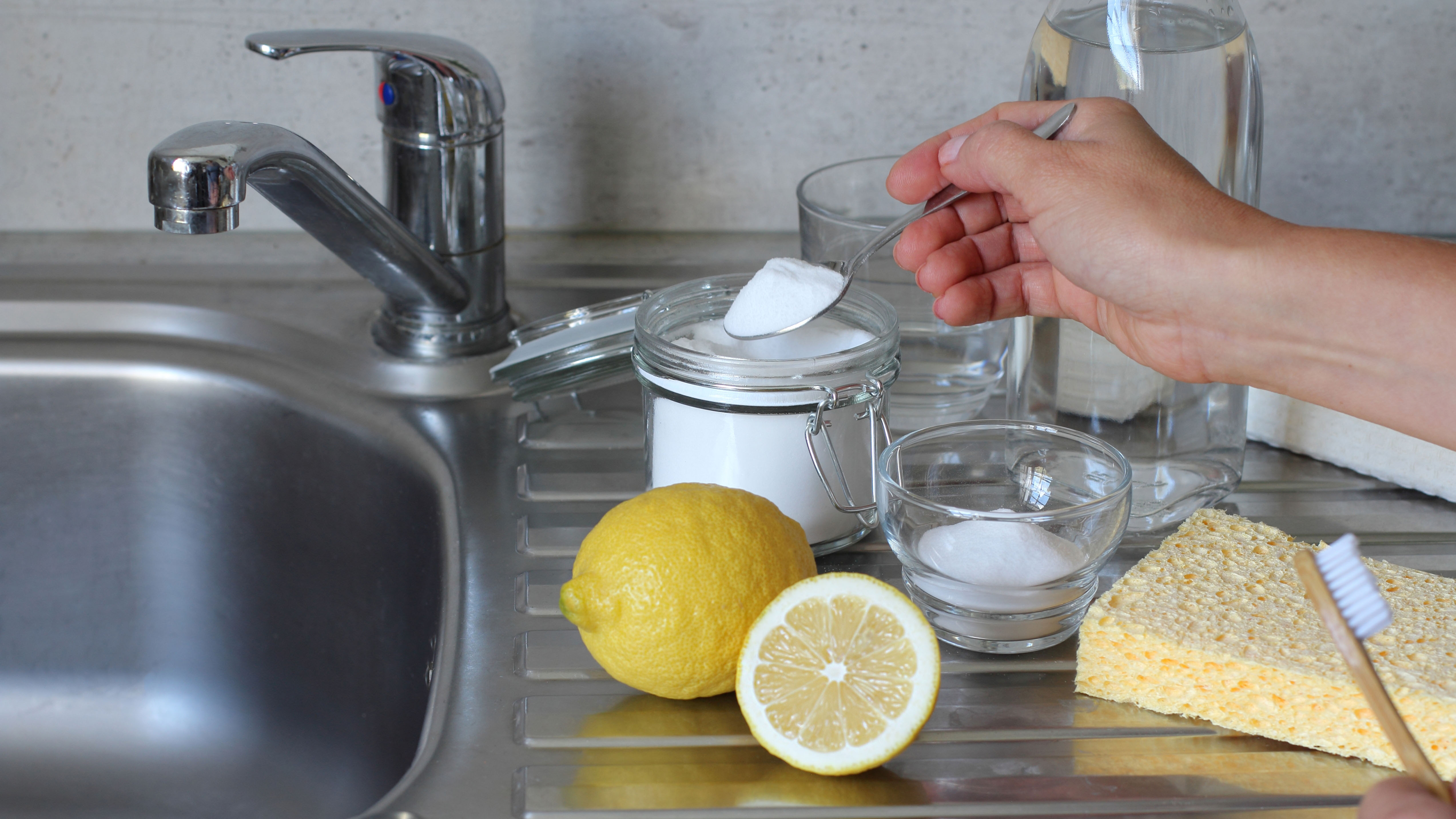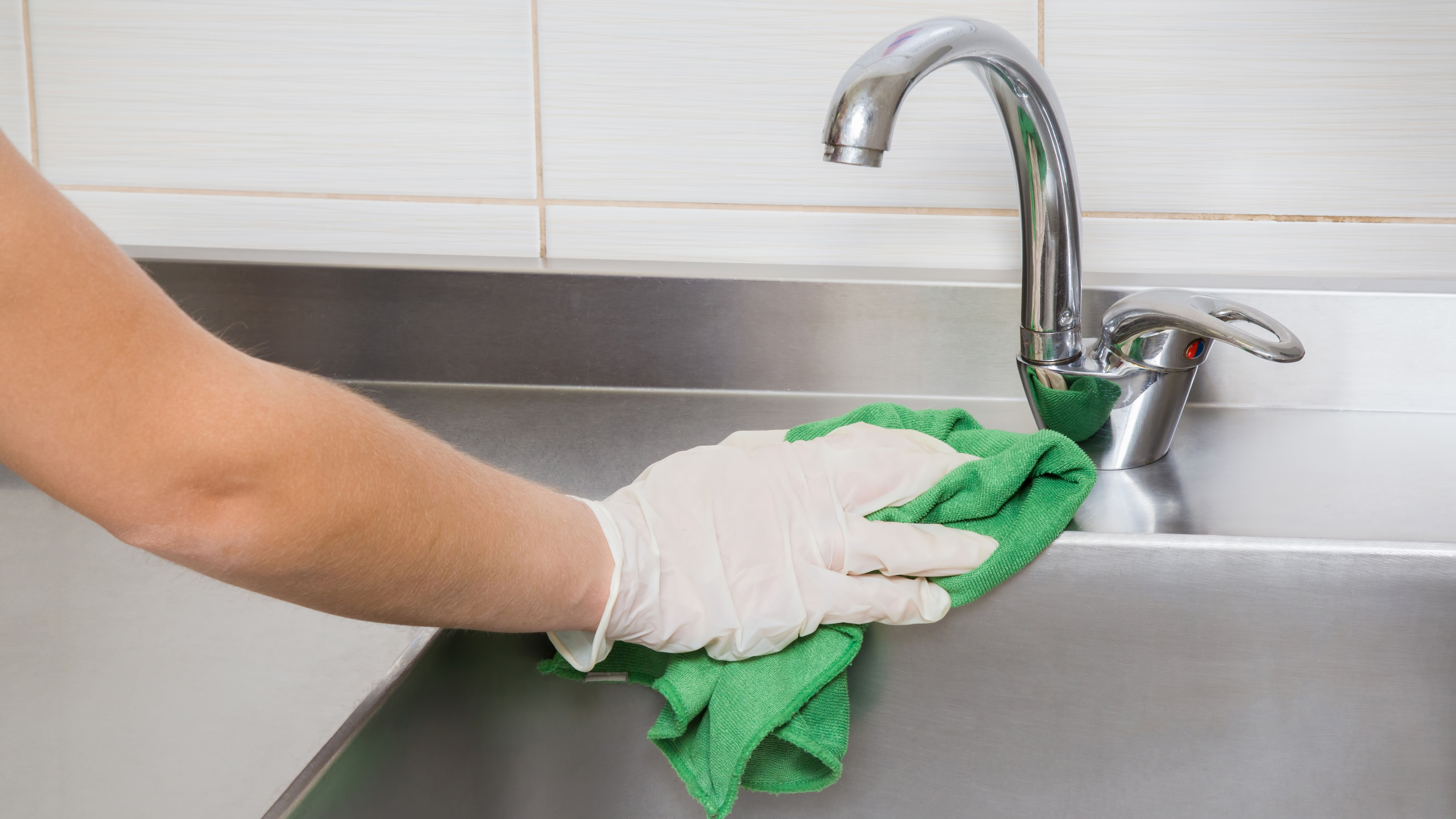How to clean a stainless steel sink in 7 easy steps
Here’s how to clean a stainless steel sink quickly and effectively

We use the sink everyday, and over time it can start to lose its sparkle. That's why when it comes to our cleaning chores, everyone should know how to clean a stainless steel sink. If you don't do this properly, you'll be dealing with limescale, watermarks and soap scum on every surface. Plus, no one likes bits of food residue blocking the drain.
If you don't fancy the chore of scrubbing however, there is a quick and easy way to restore your stainless steel sink. Luckily, all it takes are a few household items which you may already have to hand. Here, we will guide you through everything you need to know, from dealing with light and pesky stains, to removing more embedded ones. So, if you want your sink to shine like new again, follow these top tips on how to clean a stainless steel sink.
How to clean a stainless steel sink
Dish soap
Sponge
Baking soda
White distilled vinegar
Microfiber cloth
Olive oil
Cream of tartar (optional)
1. Empty and rinse — First of all, you can’t clean your sink while it’s filled with cups and dishes. So, empty it out and remove any food residue from the plug. Give it a quick rinse to wash away any immediate stains as well.
2. Scrub with soap — Next, you’ll want to use a few drops of dish soap and a non-abrasive sponge to give your sink a preliminary scrub. Be sure to cover the entire sink, including the walls, any hidden crevices and around the plug hole. Don’t forget to give the faucet a once over as well. Once you’ve done this, rinse away the soapy water.

3. Apply baking soda — While your sink is still damp, sprinkle baking soda over all of the surfaces. Baking soda is a brilliant cleaning agent because it breaks down dirt and grease and can scrape away stains, but it’s not so abrasive that it damages the stainless steel.
4. Scrub — Using your sponge (make sure it’s non-abrasive), scrub the baking soda in the direction of the grain of the stainless steel. The grain should be visible to the eye if you inspect the surface — you can also feel it if you run your fingers over it.
When combined with the residual water, the baking soda should form a thick paste. Continue scrubbing until you’ve covered the entire surface. Don’t rinse away.
Get instant access to breaking news, the hottest reviews, great deals and helpful tips.

5. Spray with vinegar — For extra cleaning power, you'll now want to spray distilled white vinegar over the baking soda. This will create a fizzy chemical reaction which dissolves and dislodges stains; that’s what makes baking soda and vinegar so good at cleaning.
This can smell quite strong, but vinegar is brilliant at removing watermarks and limescale, so it’s worth ventilating the room and enduring it. Wait until the solution finishes fizzing and then rinse it away.
If you don’t have vinegar to hand, lemons are another option you can use here. Simply cut one in half and scrub a segment on top of the baking soda in the direction of the grain. Much like vinegar, lemon juice is useful for removing limescale, plus it smells great too. Rinse away once you’ve finished.
6. Tough stain solutions — If stains are still apparent, you will need to break out the big guns. One option is to use a proprietary cleaner, such as the Therapy Stainless Steel Cleaner Kit ($19.95, Amazon). If you’re using alternative cleaners, make sure they’re suitable for use on stainless steel — some cleaners as well as abrasive tools can damage this surface.
Alternatively, you can create a homemade solution by combining ¼ cup cream of tartar with one cup of distilled white vinegar. This will form a paste which you can apply directly to any stubborn stains. Gently dab it in place using a sponge and then leave to sit for a few minutes. Once time is up, rinse away the solution and repeat the process if necessary.

7. Dry the sink and buff — Once all of the stains are removed, thoroughly dry the sink using a microfiber cloth. This is an important step because any residual water will form fresh watermarks, making your efforts redundant.
Now that your sink is spotless, it’s time to make it shine. Apply a couple of drops of olive oil to a microfiber cloth and rub it on the stainless steel, moving in the direction of the grain. Remove any excess and you're done.
Your sink should now look as good as new! Here are some tips to keep it looking pristine:
Tips to keep your stainless steel sink clean
- Remove any food residue and wipe away any stains immediately. The longer you let these sit, the grosser and more stubborn it can be to clean.
- Do not leave puddles of water sitting around your faucet. These can easily go unnoticed if you’ve turned the handles with wet hands. Puddles will leave limescale and watermarks once dried.
- Likewise, get into the habit of drying your sink once you’ve finished using it. This will reduce the amount of watermarks going forward.
- Keep on top of cleaning the sink and make it part of your regular routine. It will be much quicker and easier to clean if you do this.
Next: Here's how to clean a baking sheet in 3 easy steps to make it just like new.
And to keep your kitchen looking shiny, check out our guides on how to clean a microwave, how to clean an oven, how to clean a garbage disposal, and how to clean stainless steel appliances. Specifically, you can also read about how to clean a stainless steel pan and make it gleam.
If you're looking at tidying up a bit and have messy cables lying around — you can check out how I used this simple hack to tame my tangled box of cables.

Katie Mortram used to be a Homes Editor for Tom's Guide, where she oversaw everything from kitchen appliances to gardening tools, as well as smart home tech. Specializing in providing expert advice for cleaning and home manintenance, she now works as Household Advice Editor for Good Housekeeping.
